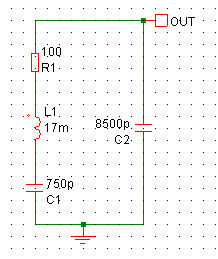volkantr
Junior Member level 2
Hi everyone,
In a project I designed a class AB type power amplifier to drive a load that's characteristics are changing according to frequency.
the load is acoustic transducer (a piezo material).
I have a look up table that shows at what frequency, what characteristics the load have. And I could make the simulations for the system for only one frequency by placing r-l-c components for the transducer, but in the system frequency is continously changing. I want to create a load that I can enter all the information(at what frequency,what impedance) from an excel table (for example). And by using this load in the simulation, I may be able to get results for whole frequency band.
Can I make this in cadence spice? (If yes! how can I do that? If not, how can I do that?)
I wish,I'm clear
thanks for replying
In a project I designed a class AB type power amplifier to drive a load that's characteristics are changing according to frequency.
the load is acoustic transducer (a piezo material).
I have a look up table that shows at what frequency, what characteristics the load have. And I could make the simulations for the system for only one frequency by placing r-l-c components for the transducer, but in the system frequency is continously changing. I want to create a load that I can enter all the information(at what frequency,what impedance) from an excel table (for example). And by using this load in the simulation, I may be able to get results for whole frequency band.
Can I make this in cadence spice? (If yes! how can I do that? If not, how can I do that?)
I wish,I'm clear
thanks for replying
